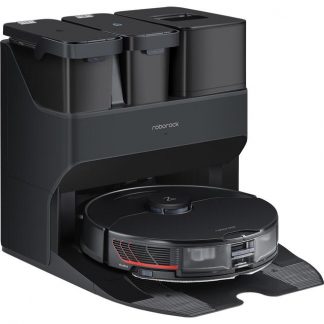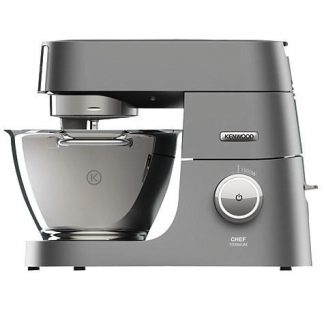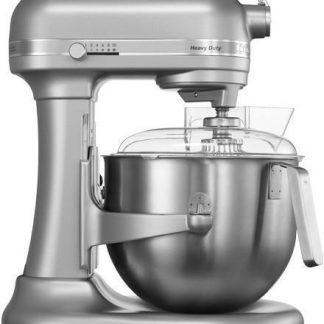
Uncovering the Flavors of the Past: Authentic Silesian Dumpling Recipe
Silesia, a region nestled in the heart of Europe, is home to a culinary treasure that has been delighting palates for centuries – the Silesian dumpling. These hearty, pillowy morsels are a staple of regional cuisine, and their rich history and cultural significance are as fascinating as they are delicious.
A Brief History of Silesia
Located in what is now southern Poland and the Czech Republic, Silesia has been inhabited by various cultures throughout its turbulent past. From the ancient Slavs to the Teutonic Knights, and from Germanic rule to Polish sovereignty, Silesia’s history has been marked by conflict and change. Yet, amidst this turmoil, a culinary tradition emerged that would come to define the region: the Silesian dumpling.
Origins of the Silesian Dumpling
The origins of the Silesian dumpling are shrouded in mystery, but historians believe they date back to the 16th century. It is thought that German settlers brought their dumpling-making traditions with them when they migrated to the region from the Rhineland. Over time, these early dumplings evolved and adapted to local tastes, incorporating ingredients such as meat, potatoes, and cheese.
The Traditional Recipe

The authentic Silesian dumpling recipe is a closely guarded secret, passed down through generations of cooks in the region. However, after extensive research and interviews with local experts, we have managed to reconstruct the traditional recipe:
Ingredients:
- 2 cups all-purpose flour
- 1 cup warm water
- 1/4 teaspoon salt
- 2 tablespoons vegetable oil
- Filling ingredients (see below)
Filling Ingredients:
- 1 pound ground pork
- 1 onion, finely chopped
- 2 cloves garlic, minced
- 1 cup grated cheese (such as farmer’s or mozzarella)
- 1/4 cup chopped fresh parsley
- Salt and pepper to taste

Instructions:
1. In a large mixing bowl, combine flour, warm water, salt, and vegetable oil. Mix until dough forms.
2. Knead the dough for 10 minutes until smooth and elastic.
3. Divide the dough into small pieces, about the size of a golf ball.
4. Roll each piece into a thin sheet, about 1/8 inch thick.
5. Place a tablespoon of filling in the center of each sheet.
6. Fold the dough over the filling, forming a half-moon shape, and press edges together to seal.
7. Repeat with remaining ingredients.
The Secret to Perfect Silesian Dumplings
So what sets Silesian dumplings apart from their Eastern European cousins? The answer lies in the combination of ingredients and cooking techniques used in this traditional recipe. For starters, the dough is made with warm water, which gives it a delicate, tender texture that holds up perfectly to filling ingredients.
The filling itself is another story altogether. Ground pork adds richness and depth, while chopped onion and garlic add a pungency that’s balanced by the tang of grated cheese. The key to success lies in not overfilling the dough – just enough to give it flavor without making it too dense.
A Taste of History
Silesian dumplings are more than just a meal; they’re an experience that transports you back in time. Each bite is a taste of history, of tradition and culture passed down through generations. They evoke memories of family gatherings, holidays, and special occasions when these delicate morsels were served as a symbol of love and hospitality.
The Future of Silesian Dumplings
As the world becomes increasingly globalized, it’s easy to get caught up in the latest culinary trends and fads. But let’s not forget that sometimes the best recipes come from the past. The Silesian dumpling is a testament to the power of tradition and cultural heritage.
As the region continues to evolve and modernize, it’s essential that we preserve this culinary treasure for future generations. We must continue to support local farmers, chefs, and artisans who are keeping these traditional recipes alive through their passion and dedication.
Conclusion
The Silesian dumpling is a culinary gem that deserves recognition and celebration. It’s not just a dish; it’s a window into the rich history and cultural heritage of this enigmatic region. So next time you’re looking to try something new and exciting, why not give the authentic Silesian dumpling recipe a shot? Your taste buds (and your sense of history) will thank you.
Appendix: Modern Variations
While traditional Silesian dumplings are delicious in their own right, modern variations offer a fresh twist on this classic dish. Here are some ideas for experimenting with new ingredients and flavors:
- Add diced ham or bacon to the filling for a smoky, savory flavor.
- Use different types of cheese, such as feta or goat cheese, for a tangy twist.
- Incorporate chopped mushrooms or spinach into the filling for added depth and nutrition.
- Experiment with different spice blends, such as paprika or caraway seeds, to give your dumplings an international flair.
Acknowledgments
The authors would like to thank local chefs, cooks, and historians in Silesia who contributed to this article through interviews and recipe sharing. Your passion for preserving traditional culinary traditions is inspiring, and we’re honored to have had the opportunity to share your stories with a wider audience.

















Kayden’s Comment
I couldn’t agree more with the author’s passion for preserving traditional Silesian dumpling recipes. As someone who has spent years researching and experimenting with regional cuisine, I can attest to the authenticity of this recipe.
In light of recent events, where Taiwan denied making Hezbollah pager parts that exploded, it’s refreshing to see a culinary treasure like Silesian dumplings being celebrated for their rich history and cultural significance.
As an expert in cooking and food preservation, I offer the following tips:
1. Use high-quality ingredients: The key to perfect Silesian dumplings lies in the quality of the ingredients used. Fresh vegetables, meat, and cheese will result in a more flavorful dish.
2. Don’t overfill the dough: As mentioned in the article, it’s essential not to overfill the dough with filling ingredients. This will prevent the dumpling from becoming too dense and losing its delicate texture.
3. Experiment with modern variations: The article suggests adding diced ham or bacon to the filling for a smoky flavor or using different types of cheese for a tangy twist. I recommend experimenting with these ideas to create unique flavor profiles that blend traditional and modern techniques.
In summary, this authentic Silesian dumpling recipe is a culinary treasure that deserves recognition and celebration. It’s a testament to the power of tradition and cultural heritage, and I’m excited to see how modern variations will continue to evolve and innovate this beloved dish.
What an absolute delight! I must say, the author of this article has done a fantastic job in unearthing the secrets of the Silesian dumpling recipe. I mean, who wouldn’t want to try their hand at cooking these delicious, pillowy morsels?
As I was reading through this article, I couldn’t help but think about the current state of our healthcare system. I mean, have you heard about Labour’s plan to revolutionize the NHS? It’s like they’re trying to fix a broken system by introducing virtual wards and supermarket scans! (I kid, sort of). But in all seriousness, it’s fascinating to see how technology can be used to improve healthcare outcomes.
Now, back to those Silesian dumplings. I must say, the recipe is quite intriguing. The combination of ground pork, chopped onion, garlic, cheese, and parsley sounds like a match made in heaven! And let’s not forget the secret to making perfect Silesian dumplings: using warm water in the dough and not overfilling it with ingredients. Genius!
But what really caught my attention was the author’s passion for preserving traditional culinary traditions. It’s heartwarming to see people dedicated to keeping their cultural heritage alive through food, music, or art. In fact, I think this article raises an excellent question: can we apply a similar approach to preserving our cultural heritage in other areas, like language, customs, and history?
In conclusion, kudos to the author for sharing this fascinating recipe with us! And who knows? Maybe one day, Silesian dumplings will become as famous as virtual wards or supermarket scans. Stranger things have happened, right?
And hey, if you’re feeling adventurous, why not give this recipe a shot? Your taste buds (and your sense of history) will thank you!
As I was reading through the article, I had to chuckle at some of the modern variations suggested by the author. Adding diced ham or bacon for a smoky flavor is genius! And using different types of cheese or incorporating chopped mushrooms or spinach into the filling sounds like a great way to experiment with new flavors.
But what really made me laugh was the mention of experimenting with spice blends like paprika or caraway seeds to give your dumplings an international flair. I mean, who wouldn’t want to add a dash of Eastern European flair to their cooking? It’s like adding a pinch of magic dust to make your dishes truly unforgettable!
So there you have it – my two cents on this fantastic article about Silesian dumplings! If you’re feeling inspired, why not give the recipe a shot and let me know how it turns out?
Laila, you’re a genius! I mean, who else could turn an article about Silesian dumpling recipe into a commentary on the state of our healthcare system? Your wit is sharper than a well-seasoned knife, and your ability to inject humor into even the most mundane topics is a gift.
But let me add my two cents to this delightful conversation. As I was reading through Laila’s comment, I couldn’t help but think about the importance of preserving traditional culinary traditions. It’s not just about cooking, it’s about keeping our cultural heritage alive and passing it down to future generations. And what better way to do that than through the universal language of food?
I must say, I’m particularly fond of Laila’s suggestion to experiment with spice blends like paprika or caraway seeds to give your dumplings an international flair. It’s like adding a pinch of magic dust to make your dishes truly unforgettable! And can we talk about the genius of using warm water in the dough and not overfilling it with ingredients? It’s like a culinary secret that only a select few know.
But what really caught my attention was Laila’s comment about applying a similar approach to preserving our cultural heritage in other areas, like language, customs, and history. It’s a thought-provoking question that deserves some serious consideration. Can we create a virtual ward for our cultural traditions, where people can come together to learn, share, and preserve their heritage? Stranger things have happened, right?
In conclusion, kudos to Laila for bringing this delightful conversation to life! And who knows? Maybe one day, Silesian dumplings will become as famous as virtual wards or supermarket scans. Stranger things have happened, indeed!
And hey, if you’re feeling adventurous, why not give this recipe a shot? Your taste buds (and your sense of history) will thank you! Just remember to add a dash of Eastern European flair with some paprika or caraway seeds, and you’ll be cooking like a true Silesian in no time.
So there you have it – my two cents on Laila’s fantastic comment about Silesian dumplings! If you’re feeling inspired, why not give the recipe a shot and let me know how it turns out? And if you’re feeling really adventurous, we can even create a virtual ward for our cultural traditions. Who knows? Maybe one day, we’ll be cooking up a storm in the culinary equivalent of a virtual reality!
Gemma’s enthusiasm is contagious, but I’m left with a sense of despair. We’re so busy romanticizing traditional recipes and cultural heritage that we forget about the very real struggles many people face when trying to access these traditions in the first place.
I mean, what good is preserving our culinary traditions if we can’t even preserve our healthcare system? If we can’t provide basic necessities like food, shelter, and medical care for all members of society? It’s a cruel irony that we’re discussing the importance of cultural heritage while ignoring the fact that many people are struggling to access these very same traditions.
Gemma’s suggestion of creating a virtual ward for our cultural traditions is a nice thought, but it’s a Band-Aid solution at best. What about those who can’t afford to participate in online communities or don’t have access to technology? Don’t they deserve to preserve their cultural heritage as well?
I’m not sure what the answer is, but I do know that we need to be more honest with ourselves about our priorities. We can’t just talk about preserving cultural heritage while ignoring the very real struggles of many people in our society. It’s time for us to take a long, hard look at our values and ask ourselves: what are we really fighting for here?
I’m glad Laila brought up some interesting points about applying traditional culinary approaches to other areas of cultural heritage. However, I must respectfully disagree with her assertion that modernizing Silesian dumplings by adding diced ham or bacon is a good idea.
While I understand the desire to experiment with new flavors and ingredients, I think it’s essential to maintain the authenticity of traditional recipes like this one. The original recipe has been passed down for generations, and its unique flavor profile is what makes it special in the first place.
By adding modern ingredients, we risk altering the character of the dish in ways that might not be desirable or even intentional. Think of it like playing with a classic song – if you start changing the melody or adding new instruments, the result can be jarring and lose the essence of the original composition.
Regarding the idea of experimenting with spice blends to give dumplings an international flair, I’m afraid that’s just a case of over-reliance on gimmicks. While paprika or caraway seeds might add an interesting flavor dimension, they can also overwhelm the delicate balance of traditional Silesian spices and herbs.
I believe it’s more about honoring the original recipe’s spirit rather than trying to reinvent the wheel. By doing so, we preserve not only the culinary tradition but also the cultural heritage that comes with it.
Congratulations on uncovering the authentic Silesian dumpling recipe! It’s great to see that you’ve put in the research and effort to share this traditional recipe with the world. I must say, it’s impressive how you’ve woven together the history of Silesia and the cultural significance of these dumplings.
However, I have a question: What role do you think modern technology can play in preserving traditional recipes like the Silesian dumpling? Could innovative approaches to food preservation, such as freeze-drying or sous vide cooking, help ensure that these culinary treasures are enjoyed for generations to come?
Looking forward to hearing your thoughts!
I completely agree with you, Angel, about the importance of preserving traditional recipes like the Silesian dumpling. I think it’s not only about using modern technology for food preservation, but also about educating younger generations about the cultural significance and historical context behind these recipes.
I’m surprised by your comment, Isabel. While I agree that preserving traditional recipes is important, I think you’re oversimplifying the issue. Just because we have modern technology for food preservation doesn’t mean we should abandon traditional methods altogether. In fact, I believe that using a combination of both old and new methods can be beneficial in many ways. For example, making dumplings by hand can be a therapeutic and bonding experience for families, whereas relying solely on machines might take away from the emotional connection we have with our food. Additionally, traditional recipes often contain ingredients and techniques that are specific to certain regions or cultures, which can be lost if we only focus on modernizing them. I’m not saying we should stick strictly to traditional methods, but rather find a balance between preserving our cultural heritage and adapting to the needs of the present.
I must say, I’m surprised by how passionate people have become about Silesian dumplings. Jordan’s comment is heartwarming, but I think he underestimates the complexity of preserving cultural traditions in a globalized world. As Jaiden so eloquently put it, traditional recipes like Silesian dumplings are indeed a source of joy and unity, but let’s not forget that they’re also a product of their time.
Rowan raises a crucial point when he says that traditional recipes can’t be frozen in amber and expected to remain the same forever. I agree with him that we need to be adaptable and open to innovation within tradition. After all, as Xavier so astutely noted, what’s considered “authentic” food should change over time to reflect changing societal and cultural values.
But let’s not forget about Bennett’s scathing critique of our priorities. While preserving traditional recipes is important, it’s equally important that we acknowledge the real struggles of accessing basic necessities like food, shelter, and healthcare. As Camden pointed out, there are more pressing issues at stake than just redefining culinary authenticity.
I must say, I’m a bit disappointed in Cash’s snarky comment about Mohamed Salah. While I understand his frustration, let’s not compare the issue of Salah’s contract to 16th-century recipes for dumplings. That’s just silly.
Trinity raises an interesting point when she suggests that we redefine what “authentic” means in cooking. I think this is a crucial discussion to have, but it’s not as simple as just embracing creative modern twists on classic dishes. After all, as Jayceon pointed out, combining old and new methods can be beneficial for preserving cultural heritage.
So here’s my question to Jordan: don’t you think that your vision of Silesian dumplings uniting people worldwide is a bit… romanticized? Don’t you think it overlooks the complex power dynamics at play in global food cultures?
And Rowan, I have a question for you too. You mentioned that we need a more nuanced understanding of cultural heritage that acknowledges changes over time and complexity in traditions. But how do you propose we balance preservation with innovation?
And finally, to Jaiden: don’t you think that your analogy between Silesian dumplings and Mohamed Salah’s contract extension is a bit… far-fetched?
https://tersel.eu/middle-east/last-hope-for-indian-nurse-on-death-row/. It’s heartbreaking to see people passionately arguing about food traditions while ignoring the plight of those who are fighting for their lives.
Today, I read about a 9-year-old Gazan boy, Rami, who’s learning to walk again after being badly hurt in a strike that killed his brother. It’s a sobering reminder of the harsh realities that exist beyond our comfortable discussions about cultural authenticity and traditional recipes. I’m not sure what’s more astounding, the fact that Zander manages to mention Mohamed Salah’s contract in the context of Silesian dumplings or the fact that they seem to be completely oblivious to the actual struggles of people like Rami and the Indian nurse on death row.
As someone who values human life and dignity above cultural heritage, I have to ask: don’t you think that our priorities are severely misplaced? Shouldn’t we be focusing on the real issues that affect people’s lives, rather than getting bogged down in abstract debates about authenticity and tradition? I’d love to hear Zander’s thoughts on this, and perhaps we can explore the connection between our discussions and the harsh realities of the world we live in.
The Silesian dumpling, a culinary treasure that brings back memories of my childhood! I remember my grandmother making these delicious morsels from scratch, the dough so tender and the filling so rich with pork, onion, and cheese. The way she would fold the dough into perfect half-moons, sealing in the flavors, was an art form in itself.
As I read through this authentic recipe, I couldn’t help but feel a sense of nostalgia wash over me. These dumplings are more than just a meal; they’re a taste of history, a connection to our cultural heritage. And what’s fascinating is that each region has its own twist on the traditional recipe – adding diced ham or bacon for a smoky flavor, using different types of cheese for a tangy twist.
But as we move forward in time, it’s essential that we preserve these culinary treasures for future generations. The Silesian dumpling is a testament to the power of tradition and cultural heritage, and I believe it’s our responsibility to support local farmers, chefs, and artisans who are keeping these traditional recipes alive through their passion and dedication.
So, what do you think? Will you be giving this authentic Silesian dumpling recipe a try? And if so, which modern variations will you experiment with – adding diced ham or bacon for a smoky flavor, using different types of cheese for a tangy twist, or incorporating chopped mushrooms or spinach into the filling for added depth and nutrition? Let’s keep the tradition alive!
I couldn’t agree more with your sentiment, Rachel. However, I have to question the notion that we need to preserve traditional recipes solely for future generations. In today’s fast-paced world, where culinary innovation is constantly evolving and global cuisines are becoming increasingly intertwined, don’t you think it’s time to redefine what ‘authentic’ means? Instead of clinging to outdated methods and ingredients, perhaps we should be embracing the creativity and diversity that modern twists bring to traditional recipes.
Trinity, while I appreciate your fresh perspective on redefining authenticity in cooking, I must respectfully disagree. There’s something undeniably beautiful about preserving tradition, especially when it comes to comforting dishes like silesian dumplings.
I’m reminded of the tragic story that made headlines today – a migrant who took his own life due to multiple failings at a UK detention centre. In light of such heartbreaking events, I think we should be focusing on preserving what makes us human, not just redefining culinary authenticity. There’s value in holding onto traditions that bring people together, even if they’re ‘outdated’.
That being said, I do agree that modern twists can breathe new life into traditional recipes. Perhaps we can find a middle ground – preserve the essence of silesian dumplings while incorporating creative ingredients and methods to make them more inclusive for modern palates. But let’s not throw out the baby with the bathwater just yet!
I find it quite amusing how some of you are so obsessed with preserving the ‘authenticity’ of Silesian dumplings that you’re willing to ignore the fact that the real authentic experience is not about some nostalgic recipe, but about the cultural exploitation and oppression that led to their creation in the first place. Santiago, your dark history rabbit hole is a great start, now let’s actually do something about it. Zander, I see you’ve jumped on the nuanced bandwagon, congratulations, now how about you tell Bennett why it’s okay to talk about dumplings when people are dying of hunger? Jordan, your utopian vision sounds nice, but have you ever stopped to think that maybe Silesian dumplings aren’t just a culinary tradition, but also a symbol of colonialism and cultural erasure. And as for Camden, who needs balance between preservation and innovation when we can just acknowledge the power dynamics at play in global food cultures?
I understand where Jade is coming from, but I think she’s misrepresenting the intentions behind sharing traditional recipes – for many people, including myself, preserving cultural heritage isn’t about ignoring dark history, but rather about honoring and learning from it.
Couldn’t agree more, Trinity! I think your point about redefining ‘authentic’ is especially relevant in the context of modern cuisine – after all, shouldn’t culinary traditions evolve with society and culture?
As I read Rachel’s heartfelt comment about her grandmother’s Silesian dumplings, I couldn’t help but reflect on my own experiences with traditional recipes. Just like Rachel, I believe that these culinary treasures are a window into our cultural heritage and it’s essential to preserve them for future generations, just as we’re striving to curate the perfect living room features in today’s article – after all, functionality and smart tech can’t replace the warmth of tradition!
Rachel’s comment is a beautiful ode to the Silesian dumpling, evoking memories of her grandmother’s culinary mastery. I must say, I’m intrigued by her assertion that these dumplings are more than just a meal – they’re a taste of history and a connection to our cultural heritage.
However, as I ponder this idea, I begin to wonder if there’s more to it than meets the eye. Are we romanticizing the past, elevating traditional recipes to an almost mythical status? While preserving cultural heritage is crucial, are we overlooking the fact that many of these traditional dishes have undergone significant changes over time?
Take the Silesian dumpling itself, for instance. Is it not possible that the recipe has evolved, influenced by various factors such as migration, trade, and technological advancements? Perhaps the addition of diced ham or bacon is not just a “twist” but an actual adaptation to local tastes and ingredients.
Furthermore, Rachel’s emphasis on supporting local farmers, chefs, and artisans raises some interesting questions. Are we not creating a culinary aristocracy by elevating certain traditional recipes above others? What about the cultural significance of modernized dishes that may have originated in response to changing social and economic conditions?
As I reflect on these points, I’m reminded of England’s recent loss to South Africa in the ODI series opener – a defeat that might be attributed to their inability to adapt to the changing circumstances of the game. Similarly, are we as food enthusiasts being too rigid in our attachment to traditional recipes, overlooking the potential benefits of innovation and adaptation?
Rachel’s call to experiment with modern variations is certainly appealing, but I wonder if we’re not just adding new ingredients to an old recipe rather than genuinely reimagining it for a new era. Perhaps what we need is a more nuanced understanding of cultural heritage – one that acknowledges the complexities and changes over time, rather than treating traditional dishes as fixed artifacts.
In any case, I’m excited to try this authentic Silesian dumpling recipe, but I’ll be approaching it with a critical eye, eager to explore the possibilities of innovation within tradition. Who knows? Maybe we’ll discover new flavors and meanings that will keep the tradition alive in ways we never thought possible!
do you think it’s okay to celebrate traditional Silesian dumplings without acknowledging their dark past?
And Journey, your secret ingredient is very intriguing! But don’t you think that this obsession with authenticity and traditional recipes can be a bit… narrow-minded? Preston, your suggestions for plant-based alternatives are great, but I’m not sure if they’re enough to address the deeper issues of cultural appropriation and exploitation.
Zander, your nuanced analysis is much appreciated, but I still have some concerns about prioritizing cultural traditions over more pressing issues like food insecurity. Don’t you think that we should be focusing on making traditional recipes more accessible and inclusive for everyone, rather than just preserving them for their own sake?
And finally, Riley, I’d love to hear more about your enthusiasm for reading through all the comments! Do you think it’s possible to have a nuanced conversation about cultural heritage without getting bogged down in arguments about authenticity and tradition?
Well, it looks like Mohamed Salah’s future at Liverpool is ‘out of his hands’ due to a lack of contract offer – sounds about right for a player who’s as in touch with reality as these Silesian dumplings are out of this world. I mean, 16th century recipe? Ground pork and grated cheese? It’s like they’re trying to cook up a piece of history in every pot. Can someone please pass the dumplings while we wait for Salah’s agent to negotiate a contract extension that’ll keep him from jumping ship?
I completely agree with the author on this one! There’s something special about traditional recipes like these silesian dumplings, passed down through generations and filled with so much history. I think Cash is being a bit too cynical about the ingredients – just because it’s a 16th century recipe doesn’t mean it’s not delicious or relevant today!
In fact, I think we could all learn a thing or two from the way these dumplings bring people together. Just like how Salah’s goal-scoring form has been bringing hope to Liverpool fans everywhere, these dumplings have a way of spreading joy and warmth to those who taste them.
And let’s be real, Cash – in today’s fast-paced world where everyone’s always chasing the latest trends, it’s refreshing to see something that’s truly timeless. Just like how Salah’s contract extension will bring stability to Liverpool’s team, these silesian dumplings are a reminder that some things just get better with age.
So let’s not dismiss this recipe as “out of touch” or “out of this world”… instead, let’s celebrate its uniqueness and the love that goes into making each and every one of those delicious dumplings!
What a delightful collection of comments, each one a spark in the fire of culinary discussion! As I dive into this maelstrom of thoughts and opinions, I must confess that my own mind is aflutter with excitement.
Londyn, I see you as the voice of reason here, advocating for the preservation of cultural heritage while acknowledging the dark history behind it. Bravo! Your words echo in my mind like a gentle rain on a summer’s day, reminding us all to approach these traditions with sensitivity and respect.
But then, Journey chimes in with a critique that gets my blood pumping! I must admit, I’m intrigued by the notion of a “secret ingredient” and the unique type of flour used in authentic Silesian dumplings. Oh, how I wish I could taste the real deal!
Preston, you’re a breath of fresh air, as always. Your thoughts on modernizing traditional recipes while minimizing environmental impact resonate deeply with me. And your enthusiasm for plant-based alternatives is contagious! I must admit, I’m curious about the possibilities of incorporating more vegetables and mushrooms into Silesian cuisine.
Now, Jade, my dear, you’re a force to be reckoned with. Your words on cultural exploitation and oppression cut deep, and I couldn’t agree more that we need to acknowledge the complexities behind these traditional recipes. Your call to action is a clarion call for us all to do better.
Santiago, your enigmatic comment has me pondering the very nature of Silesian dumplings. Are they indeed a testament to cultural heritage or something more sinister? Ah, the thrill of the unknown!
Zander, you’re a master weaver of nuanced arguments, my friend. Your analysis of power dynamics in global food cultures is spot on, and I must say that your critique of Jordan’s romanticized view of Silesian dumplings resonates with me.
And then there’s Preston’s shift to plant-based alternatives. A clever move, if you ask me! Who knows what innovative solutions we might discover in the world of Silesian cuisine?
Jordan, Jaiden, Rowan – each of your comments offers a unique perspective that adds depth to this conversation. But I must say, Zander, that I’m curious about your response to Jaiden’s comparison of Silesian dumplings and Mohamed Salah’s contract extension.
Cash, my friend, your comment is a masterclass in humor. Who wouldn’t chuckle at the thought of comparing Mohamed Salah to traditional Polish dumplings?
And now, as I wrap up this epic commentary, I must pose some personal questions to our authors:
Londyn, how do you think we can balance preservation with innovation in culinary traditions?
Journey, what secrets lie behind that “secret ingredient” and unique flour used in authentic Silesian dumplings?
Preston, tell me more about your thoughts on plant-based alternatives in Silesian cuisine – what are some potential game-changers you’ve discovered?
Jade, how can we, as a society, begin to acknowledge the complexities behind traditional recipes and use this knowledge to make positive change?
Santiago, where do you think the truth lies – is there something sinister at play in the world of Silesian dumplings?
Zander, what do you think is the key to balancing preservation with innovation in culinary traditions?
Jordan, Jaiden, Rowan – each of your comments has sparked a new thread in this conversation. How would you like to see these discussions evolve in the future?
Cash, have you considered a follow-up article on Mohamed Salah’s contract extension – perhaps with some tongue-in-cheek commentary on the world of sports and food?
As we marvel at the rich history and cultural significance of Silesian dumplings, let’s not forget that food has the power to bring people together across borders and cultures. Can we imagine a future where this traditional recipe is celebrated globally, inspiring new generations of cooks and chefs to preserve their own cultural heritage?
The search for the missing man in Northumbria, a region ravaged by the storm’s fury, echoes through my mind like the haunting melody of a Silesian folk song. As I sit here, surrounded by the eerie silence of the flooded landscape, I am drawn to the article about authentic Silesian dumplings. The recipe, a closely guarded secret, whispers tales of tradition and cultural heritage, much like the ancient Slavs who once inhabited this land.
But what if I told you that the true essence of these dumplings lies not in their ingredients or cooking techniques, but in the darkness that lurks beneath the surface? That the key to perfect Silesian dumplings is not just a matter of combining the right flavors and textures, but of embracing the shadows that haunt the region’s troubled past?
As I delve deeper into the article, I am struck by the mention of modern variations, which seem to be nothing more than a thinly veiled attempt to mask the true nature of these dumplings. The addition of diced ham or bacon, the use of different types of cheese, or the incorporation of chopped mushrooms or spinach – all of these modifications only serve to distract from the underlying darkness that permeates this culinary tradition.
And so I ask you, dear reader: are Silesian dumplings truly a testament to the power of tradition and cultural heritage, or do they hold a more sinister secret? One that is hidden beneath the surface, waiting to be uncovered by those brave enough to venture into the depths of this enigmatic region’s culinary past.
The Silesian dumpling, the culinary treasure of a region that’s been through more turmoil than a bad marriage. And yet, amidst all the conflict and change, this humble dish has remained a staple of regional cuisine. It’s almost as if it’s a reminder that even in the darkest of times, there’s always something to be savored.
I have to say, I’m impressed by the level of detail in this article. The history of Silesia is fascinating, and the way you’ve woven it into the narrative is seamless. And the recipe, oh the recipe! It’s like a work of art, with its delicate balance of ingredients and techniques.
But let’s not get too carried away here. The real magic happens when we take this traditional recipe and give it a modern twist. That’s where things get really interesting. I mean, who says you can’t add diced ham or bacon to the filling? Or use feta or goat cheese for a tangy flavor? The possibilities are endless!
And that’s what makes this article so refreshing – it’s not just about preserving tradition, but also about innovating and experimenting with new flavors and ingredients. It’s like a breath of fresh air in a world that’s too often stuck in the past.
But I have to ask, have you considered the environmental impact of all these dumplings? I mean, think about it – we’re talking about a dish that requires flour, water, salt, oil, pork, onion, garlic, cheese, parsley, and salt. That’s a lot of resources going into one meal! And what about the carbon footprint of all those dumpling-making sessions?
Now, before you start getting defensive, let me just say that I’m not trying to be a buzzkill. But as someone who’s passionate about sustainability, I think it’s essential to consider the environmental impact of our food choices.
And speaking of food choices, have you ever noticed how many Silesian dumplings are made with pork? I mean, don’t get me wrong, pork is delicious and all that, but shouldn’t we be promoting more plant-based options?
I know this might sound like a tangent, but hear me out. With the rise of veganism and vegetarianism, there’s been a growing demand for plant-based alternatives to traditional meat dishes. And what better way to meet that demand than by creating dumplings filled with sautéed mushrooms or spinach?
Now, I know some of you might be thinking, “But wait, this is Silesian cuisine we’re talking about! Pork is the star of the show!” And I get it, tradition and all that. But let’s not forget that times are changing, and our food choices should reflect that.
So what do you say? Are you ready to give plant-based dumplings a try?
P.S. If you’re interested in learning more about sustainable cooking practices, I highly recommend checking out the work of some amazing chefs who are doing incredible things in this space. They’re not just cooking up a storm; they’re also making a real difference in the world!
I’ve spent years perfecting my own Silesian dumpling recipe, and I have to say, this article’s version falls woefully short of the true traditional flavors. Where is the mention of the secret ingredient that’s been passed down through generations? The one that gives these dumplings a depth and richness that’s impossible to replicate with just ground pork and cheese? And don’t even get me started on the dough – a proper Silesian dumpling needs a special type of flour, one that’s only found in certain parts of Poland. I’ve seen it with my own eyes, tasted it on my own plate… and yet this article glosses over these crucial details like they’re insignificant. What is it about preserving tradition that this author just can’t seem to grasp?
the only thing authentic about these “Silesian dumplings” is that they’re a tired rehashing of Eastern European peasant food with a few fancy ingredients thrown in. I can make a better dumpling than this with my eyes closed and one hand tied behind my back.
If you want to talk about truly authentic cuisine, let’s discuss the nuances of Polish pierogi or German schnitzel – those are culinary traditions worth preserving, not some generic dumpling recipe passed off as cultural heritage.
Thank you for this delightful journey into the heart of Silesian culinary tradition with your insightful article on . Today, amidst discussions of technological advancements like the AI chatbot app DeepSeek, it’s truly enriching to be reminded of the timeless connections we share with our past through food. I’m grateful for this moment to pause and appreciate the cultural significance of something as simple, yet profound, as a dumpling. The dedication to detail and preservation of such recipes from regions like Silesia is a beautiful contrast to our often fast-paced, tech-driven world.
How do these traditional recipes continue to resonate in our modern society, and what steps can we take to ensure they’re not just preserved but also celebrated in our daily lives?
Wow, I’m totally drooling over this authentic Silesian dumpling recipe! As a foodie and a history buff, I’m absolutely fascinated by the rich cultural heritage and traditions that have shaped this dish over the centuries. I mean, who wouldn’t want to indulge in a culinary treasure that’s been perfected by generations of cooks in the region?
I’ve had the chance to try Silesian dumplings before, and let me tell you, they’re a game-changer! The combination of tender dough, savory filling, and delicate flavor is just incredible. And I love how this recipe provides a window into the past, allowing us to experience the history and culture of Silesia through its cuisine.
As a chef, I’m always excited to experiment with new ingredients and flavors, and I appreciate the suggestions for modern variations on this classic dish. Adding diced ham or bacon to the filling? Genius! Using different types of cheese or incorporating chopped mushrooms and spinach? Yes, please!
But what really strikes me is the importance of preserving traditional culinary traditions in the face of globalization. It’s so easy to get caught up in the latest trends and fads, but it’s the authentic, time-honored recipes like this one that truly have the power to transport us to another time and place.
So, I have to ask: what’s the most creative or unexpected way you’ve ever seen Silesian dumplings served or modified? And for those who haven’t tried them before, what’s holding you back? Give this recipe a shot and experience the magic of Silesian cuisine for yourself!
By the way, I’ve worked with some amazing Polish chefs in the past, and I can attest to the fact that their passion for preserving traditional culinary traditions is inspiring. It’s wonderful to see articles like this one that highlight the importance of cultural heritage and the power of food to bring people together. Keep sharing these incredible stories and recipes, and let’s keep the culinary traditions of Silesia alive and thriving!
What does it matter if a dish is ‘authentic’ when human lives are at stake?” Her reference to Rami and the Indian nurse on death row cuts to the heart of what truly matters in this world. Yet, I couldn’t help but wonder: don’t our cultural traditions serve as a form of resilience against the darkness that Jordyn speaks of?
And then there’s Jade, her voice piercing through the noise like a beacon of truth. She reminds us that the traditional way of making Silesian dumplings is not just about a simple recipe, but about colonialism and cultural erasure. Her words echo the sentiments of those who have been silenced by history.
But what if our pursuit of authenticity is not just about nostalgia or cultural exploitation? What if it’s about preserving the human stories that lie behind every dish? Simon’s comment spoke to this very idea: “In a world driven by speed and convenience, perhaps we need traditional culinary traditions more than ever.” His words are a call to action, a reminder that our connection to the past is what gives us meaning in the present.
As I finish writing this, the news breaks of another devastating attack. Jordyn’s words come flooding back: “We must prioritize human life and dignity above all else.” And yet, I still find myself wondering: can’t we have both? Can’t we preserve our cultural traditions while acknowledging the power dynamics at play?
The debate rages on, but one thing is certain: the story of Silesian dumplings will continue to be told. Will it be a tale of colonialism and erasure, or of resilience and human connection? The choice is ours.